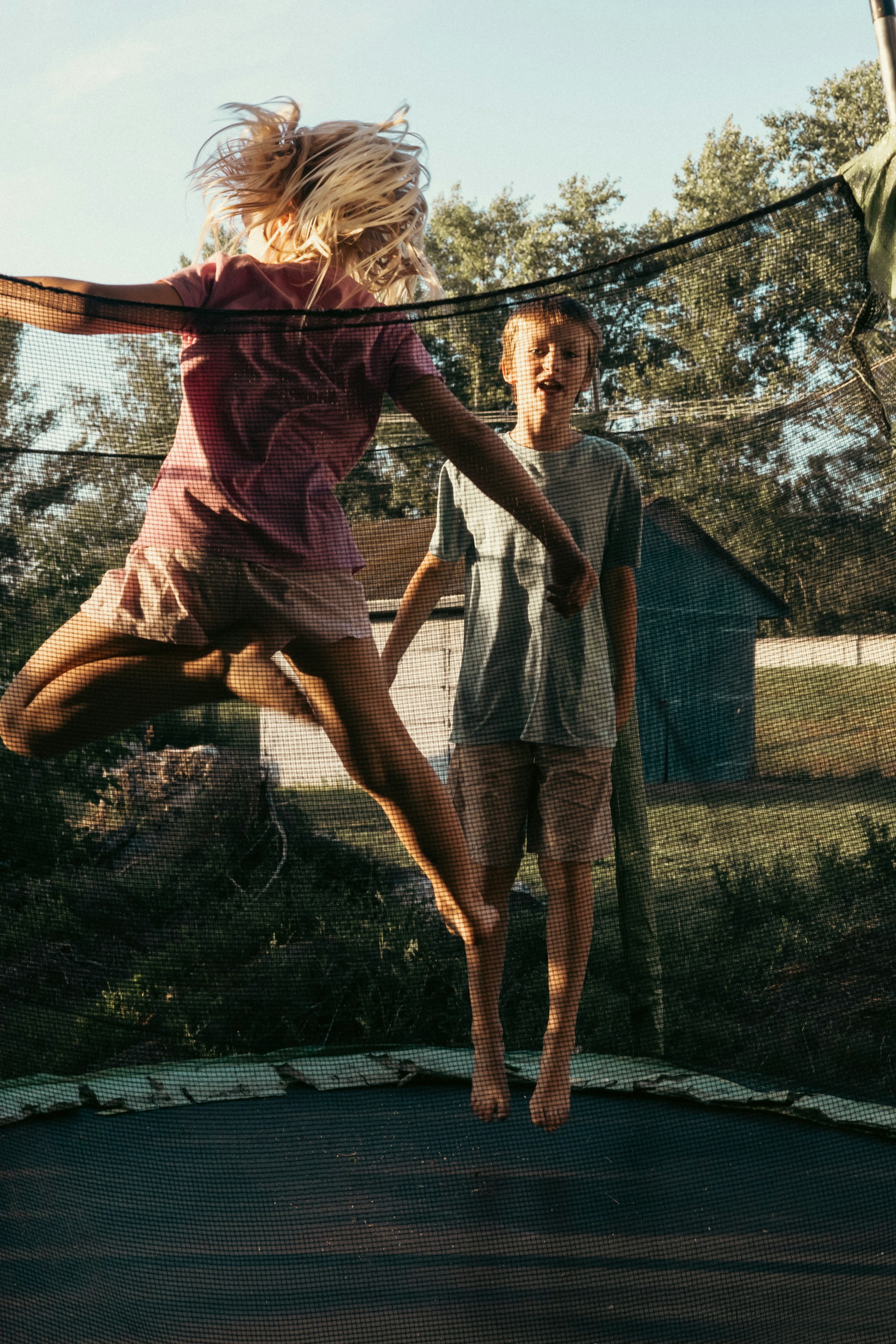

Does your child seem to have two speeds—gentle or full-contact? Do they crash into you for hugs, leap off furniture, or gravitate toward the heaviest, most physical play? That's proprioceptive seeking—your child's brilliant brain doing exactly what it needs to stay regulated. This deep pressure input is like a neural reset button that helps multiple brain networks communicate more effectively.
Download the One-Pager
Ever notice how your child seems to have exactly two movement speeds—gentle or full-contact? Do they crash into you for hugs, leap fearlessly off furniture, or consistently choose the heaviest, most physical play options? What you're seeing might be proprioceptive seeking—your child's brain actively doing exactly what it needs to stay regulated and focused.
Proprioception is often called the body's "sixth sense," and it's actually pretty fascinating. It tells the brain precisely where the body is positioned in space and how much force is being used in any given moment. It's how we can hug with just the right pressure, push open a door without falling through it, and move smoothly through space without constantly staring at our limbs.
For some children, this sensory system needs to run a bit louder to be heard. They need more input—deeper pressure, stronger resistance, more grounding sensations—to feel calm and in control of their bodies.
When your child crashes into the couch, they're not being "too rough" or seeking attention. They're actually delivering precisely the sensory input their nervous system needs to organize and feel steady.
Proprioceptive input tends to have organizing effects on the nervous system. Many children show improved attention and focus, better emotional regulation, and increased sense of body awareness when their proprioceptive needs are met.
Try saying: "Your body looks like it needs some deep pressure. Want to do wall pushes with me, or would you like a really tight hug?"
Here's the key insight: these aren't "problem behaviors" that need to be stopped. They're actually sophisticated sensory strategies—your child's brain actively seeking the specific input it needs to function optimally.
Try saying: "You're bumping into a lot of things today—want to help me carry this heavy laundry basket so your body can feel more settled?"
When proprioceptive needs are consistently supported, many children show positive changes: smoother transitions between activities, increased flexibility when dealing with big emotions, longer periods of focused attention, and greater confidence in their physical abilities.
What we think is happening: Deep pressure input activates pressure-sensitive receptors in the skin and deeper tissues. This sensory input appears to have calming effects on the nervous system, though individual responses can vary significantly.
| Age Range | Brain-Friendly Heavy Work Ideas |
|---|---|
| 2–4 years | Jumping on cushions or mini trampolines; carrying toys in bins; pushing ride-on toys or lightly weighted objects. |
| 5–7 years | Wall push-ups or animal walks; playground climbing structures; helping carry laundry baskets or stacks of books. |
| 8+ years | Martial arts or swimming activities; rock climbing or yoga poses; meaningful chores like vacuuming or gardening. |
Carrying laundry baskets, helping with yard work, playground equipment that requires strength and coordination.
Tug-of-war games, resistance bands, push-pull activities with furniture or exercise equipment.
Pillow squishes, weighted blankets or lap pads, bean bag "sandwiches" where they get gently compressed.
Try saying: "Looks like your body needs to crash into something. Want to roll up in the blanket burrito?"
Instead of: "disruptive" • Try: "crashing into desks likely represents a sensory need, not intentional misbehavior."
Volunteer your child for tasks like delivering supplies, moving chairs, or any classroom job that engages their muscles.
Request flexible seating options, fidget tool access, and regularly scheduled movement breaks.
Children who crave deep pressure input often develop notable strengths: they frequently excel in sports and physical challenges, build strong body awareness and spatial intelligence over time, and develop remarkable resilience and stamina. When their sensory needs are understood and supported, these natural strengths really get to shine.
Educational Content Only
This framework offers one helpful way to understand your child's experiences. It complements—never replaces—professional clinical services, medical advice, or therapeutic interventions.
Trust Your Instincts
Every child's brain works differently. You know your child best, and what resonates for one family may not fit for another.
This content is developed with care, grounded in research, and offered with respect for your family's unique journey.